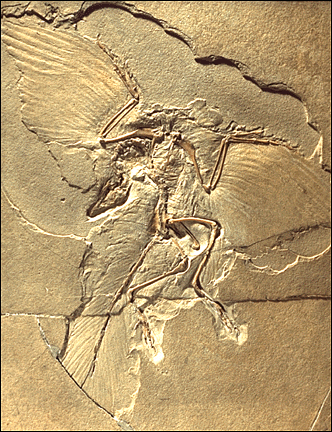Voilà un nouveau petit crocodile brésilien (50 cm de long), datant de 90 millions d'années, je ne pense pas qu'on en ait déjà parlé.
Il aurait eu de très grands yeux (peut-être un nocturne ?), et se nourrissait probablement de petites proies telles des insectes.
Le lien est en portugais ou en espagnol

:
http://g1.globo.com/Noticias/Ciencia/0,,MUL23146-5603-475,00.htmlIl va falloir refiler ça à Mark pour qu'il nous traduise.

Sinon je crois avoir trouvé une traduction de ce texte en anglais, je vous la mets ici :
Scientist crew find dwarf crocodile in Sao Paulo State inland
Remains was from an animal that lived 90 million years ago with dinosaurs.
The discovery made in Marília city (SP) was announced in Rio de Janeiro.
By Reinaldo José Lopes
Amidst giants, it was a dwarf. While long-necked multi-tonned dinosaurs stomped over the land which would became the Sao Paulo State inland, a croc only 50-cm long, smaller even then an extant caiman, made its living too. The creature, christened
Adamantinasuchus navae, had their remais described by Brazilian paleontologists, who showed them to the public in this tuesday (17).
The animal was discovered in the place where a dam is under construction by William Nave, coordinator of the Paleontological Museum of Marília (SP). Nave one of the greater fossil hunter of Sao Paulo state inlands, says that he had gone to the local where the dam is being erected to prospect for potential findings. "Almost always we find something interesting in those places. But when I've arrived the dam lake was already being filled." Even though, he found the
A. navae fossils in rocks that seems to date back till 90 million years ago.
The morphological analysis of the creature was made by Pedro Henrique Nobre and Ismar de Souza Carvalho, from Geological Department of Rio de Janeiro Federal University (UFRJ), and it had lead to the conclusion that the remais was from a new extinct crocodile species. For their finding, Nova was honoured with the species name
navae.
"What is most peculiar in that animal, is that it was very small, as a Chiuaua dog", said Carvalho. In the skull there are other odd features: eyes very big in relation to the head size, and very protruding anterior teeth.
Merging those features with the small size, the researchers think that that animal was nocturnal - good reason to have large eyes - and prey upon small animais, maybe insects or even carrion. The teeth could help to grap the prey. Those characters are very unusual in modern day crocs. "I would say that it was a kind of Carmen Miranda - small, but a bombshell", jokes Carvalho.
The study was published in "Gondwana Research" and was funded by Rio de Janeiro State Research Foundation (Faperj).
